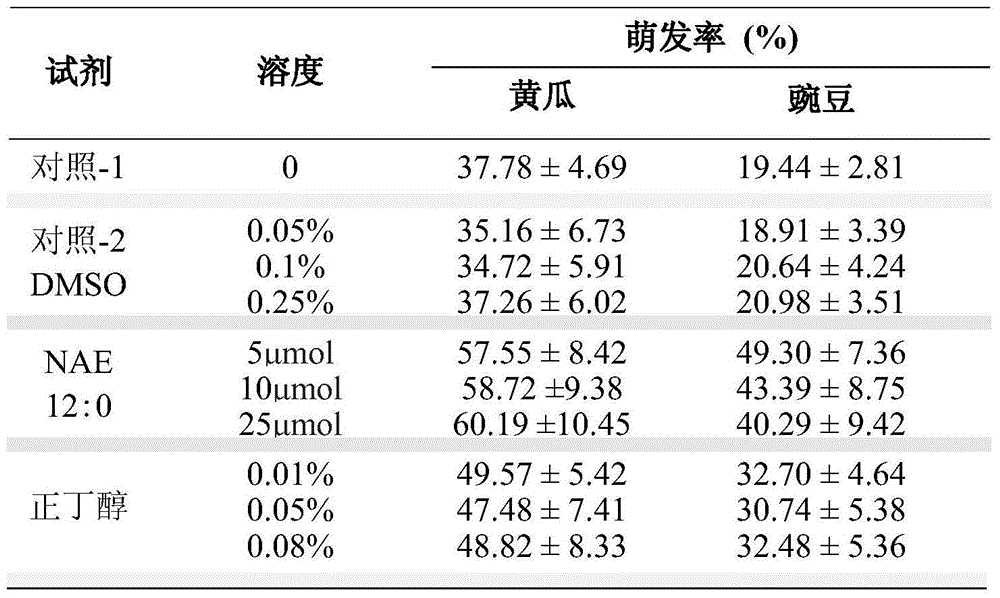Method for improving imbitional chilling injury resistance of plant seeds
A technology for imbibition and chilling damage and plant seeds, which is applied to the application of n-butanol and N-acylethanolamine in improving the resistance of seeds to imbibition and chilling damage, and the treatment field of improving the resistance of plant seeds to imbibition and chilling damage, which can solve the problem of shortening the emergence time, Problems such as poor quality of seedlings and low emergence rate can shorten the emergence time, improve the ability to resist imbibition and cold damage, and improve the emergence rate.
- Summary
- Abstract
- Description
- Claims
- Application Information
AI Technical Summary
Problems solved by technology
Method used
Image
Examples
Embodiment 1
[0015] n-butanol treatment system: n-butanol was prepared with deionized water, and the final treatment concentrations were 0.01%, 0.05%, and 0.08%. Control-1, directly treated with deionized water.
[0016] N-acylethanolamine (NAE) treatment system: three treatment solutions: (1) control-1, directly treated with deionized water; (2) control-2: the same volume as 5 μmol, 10 μmol, 25 μmol of dimethyl sulfoxide (DMSO), that is, the solubility of DMSO is 0.05%, 0.1%, 0.25%; (3) NAE12:0 is first dissolved in DMSO to prepare a 10 mmol mother liquor, and then diluted to the final treatment concentration: 5 μmol, 10 μmol, 25 μmol.
[0017] Imbibition and chilling sensitive seeds: NAE and n-butanol were applied to cucumber and pea during imbibition and chilling and germination, respectively. Imbibition and chilling were treated at 4°C for 24 hours and then transferred to moist filter paper, and placed in a constant temperature light incubator at 25°C. Germination was carried out unde...
PUM
 Login to View More
Login to View More Abstract
Description
Claims
Application Information
 Login to View More
Login to View More - R&D
- Intellectual Property
- Life Sciences
- Materials
- Tech Scout
- Unparalleled Data Quality
- Higher Quality Content
- 60% Fewer Hallucinations
Browse by: Latest US Patents, China's latest patents, Technical Efficacy Thesaurus, Application Domain, Technology Topic, Popular Technical Reports.
© 2025 PatSnap. All rights reserved.Legal|Privacy policy|Modern Slavery Act Transparency Statement|Sitemap|About US| Contact US: help@patsnap.com

